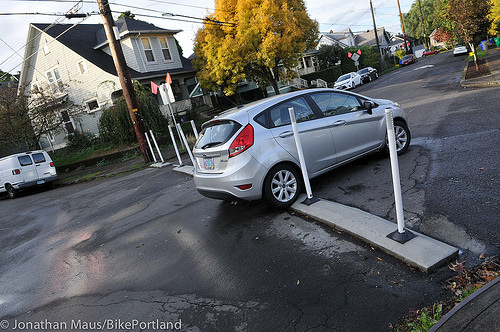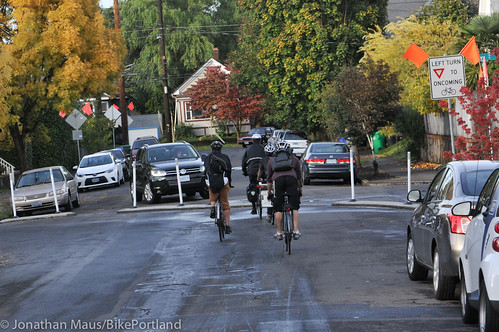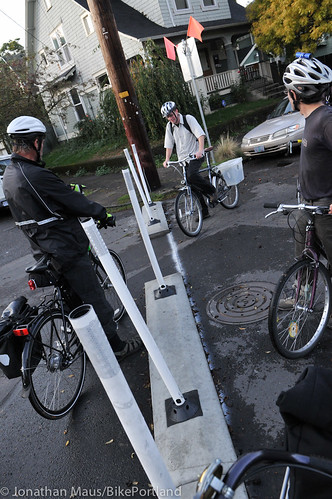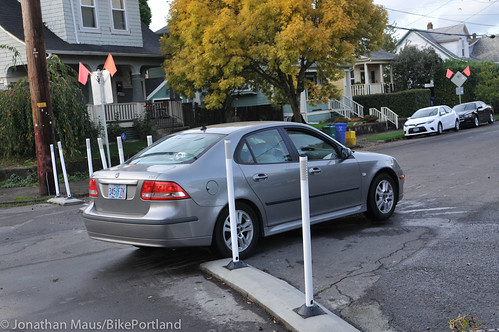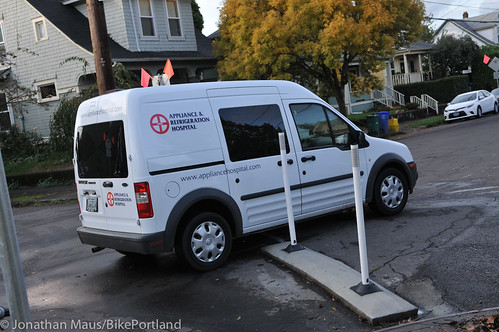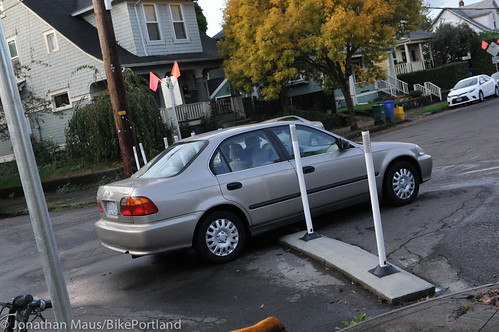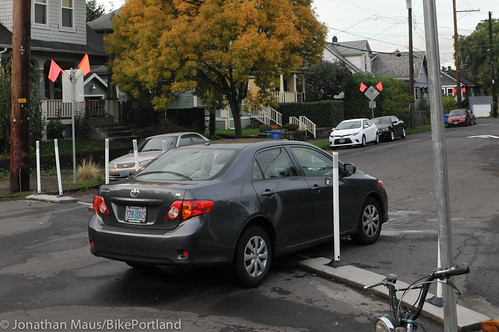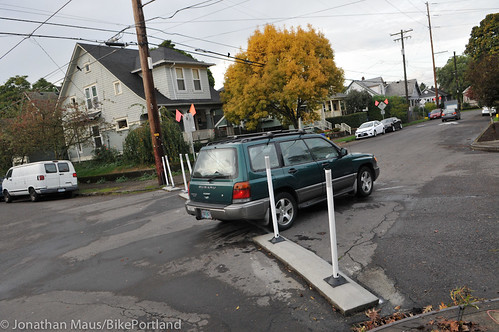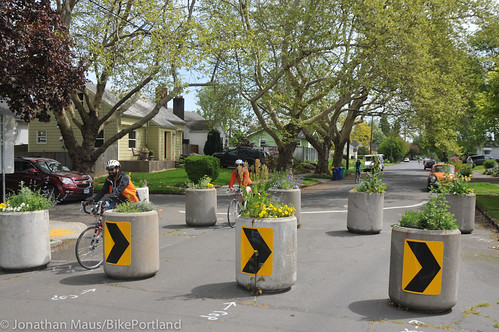A traffic diverter is a barrier placed in an intersection to prevent auto traffic from going through it. The goal is to make certain streets less attractive to auto drivers and reduce auto traffic volumes overall. So, when it’s relatively easy to drive through one — which is the case with a new diverter in northeast Portland — it sort of defeats the purpose.
The Bureau of Transportation recently installed a diagonal diverter on NE Rodney at Ivy. As we reported a few weeks ago, it was installed at the urging of the Eliot Neighborhood Association. With changes afoot on N Williams Ave, residents were concerned that Rodney would become a busy speedway full of impatient drivers cutting-through their neighborhood in search of a quick route north.
They were right. Since the lane changes on Williams (they’re still not fully complete), Rodney has seen a significant increase in auto traffic during the evening rush. And that’s where the diverter comes in.
Here’s what it looks like…
As you can see, the new diverter on Rodney consists of three separate median islands that stretch from the southeast to the northwest corner of the intersection. They’re only a few inches high and about a foot deep. On top of the concrete curbs are four foot high plastic bollards — a.k.a. “candlestick wands” — that are bright white with reflective tape at the top. In order for bicycle riders to be able to easily pass through, there are two openings in the median curbs which are about six to eight feet wide.
Unfortunately it turns out that that’s just wide enough for cars.
Last night I sat at NE Rodney and Ivy for about 30 minutes with my camera at the ready. It only took about 30 seconds to realize that the rumors I heard last week were true.
In the video below, you can see how easy it is for people to drive through. This person barely even slows down!
And here are several others caught in the act…
Advertisement
It’s also worth noting that every person who drove over it was coming from south (on Rodney) to north.
While this shockingly lawless behavior is certainly nothing I would personally partake in, let’s give these folks the benefit of the doubt: The physical footprint of the diverter is relatively minimal and there’s no signage explicitly advising drivers that it’s illegal to drive through it. And heck, their cars fit, so why not try it?
The lightweight design of this diverter might have something to do with the fact that PBOT says it was installed only as an experiment and that it can be removed if the traffic data and/or public feedback warrants it.
Last night, volunteers from Bike Loud PDX led a ride on Rodney to encourage calmer traffic and show support for the diverter. One topic of conversation was how this diverter could be designed to work better. The trick is, the openings have to be wide enough for a large cargo bike, a handcycle, a trike, or a bike pulling a trailer to fit — yet narrow enough so cars aren’t tempted to squeeze through.
(The problem with this diverter reminds me of other situations around town where PBOT seems afraid to install infrastructure that appears too anti-car; like those “fire-friendly” speed humps that have slots where car tires can easily fit through. These devices don’t achieve desired outcomes and only end up annoying all road users.)
I think the answer on Rodney is to provide a second row of barriers with off-set openings that a bike rider could easily navigate but a driver could not. My favorite diverter in the entire city is the one PBOT installed on N Central and Tyler (in photo below). Perhaps — if it becomes permanent — the city will consider doing something similar on Rodney…
In the meantime, please tell your friends and neighbors that driving through a diverter is illegal, dangerous, and uncivilized.
